Life in the century-old church block – see what kinds of decoration solutions residents have come up with
The Puu-Käpylä district of Helsinki is home to distinctive apartments. The buildings were renovated in 2018, but the residents have an understanding attitude towards the features of the old apartments.
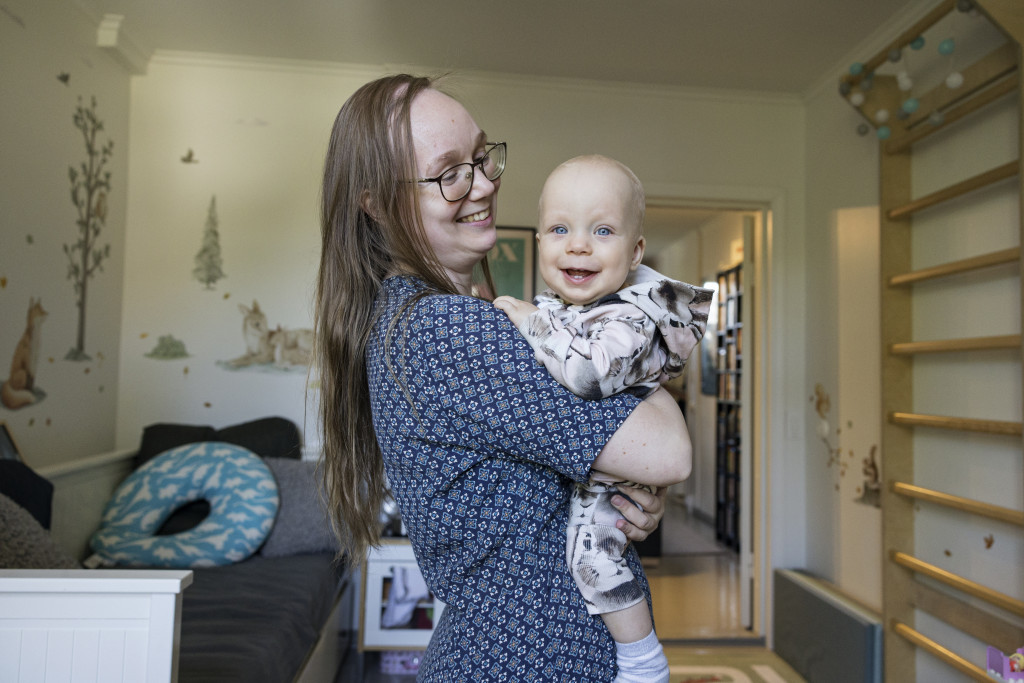
Block 824, or the ‘church block’ as the locals themselves call their home block, is located in Puu-Käpylä in an area demarcated by Metsolantie, Pellervontie, Sampsantie and Väinölänkatu. Heka owns 16 two-storey wooden buildings in the area, amounting to a total of 85 rental apartments. The buildings of the block were originally built in 1923, which means that they are celebrating their centennial this year. This milestone was celebrated over the summer with occasions such as a housing fair for residents, which had willing tenants open their doors so that their neighbours could come see their homes.
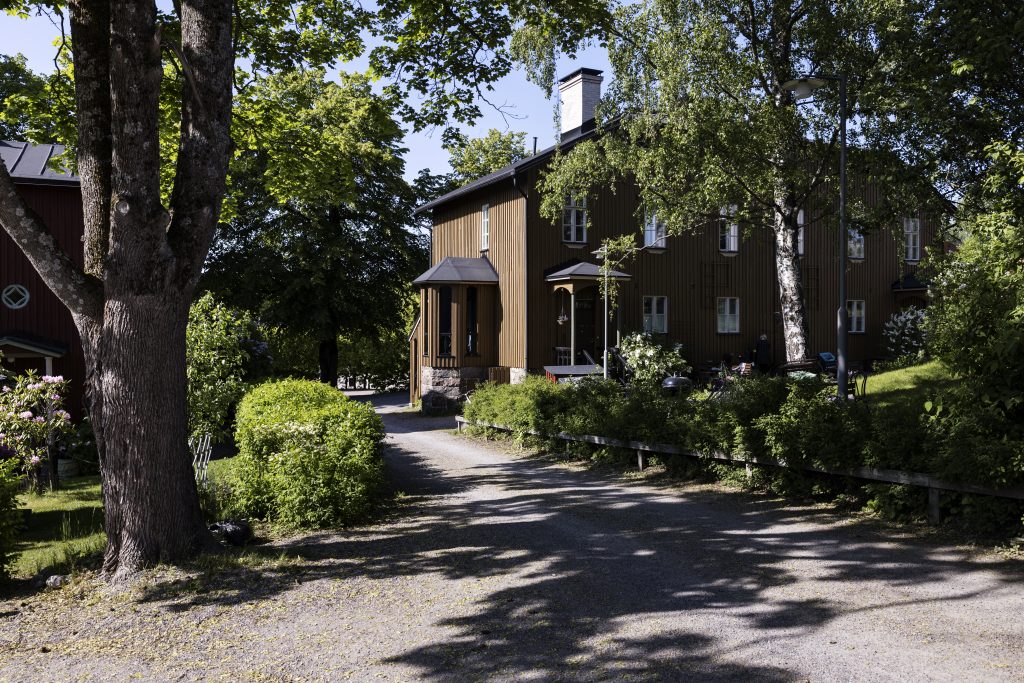
The spirit of the building can be seen in the interior decoration
The church block is a gem of Finnish wood architecture, and its buildings represent the classical architectural style prevalent in the 1920s. In 2018, the apartments of the block underwent a renovation in which their visual look was restored to the original style while the buildings were modernised to meet current requirements.
One of the biggest apartments of the church block is a three-room apartment with 91 square metres of area. It is occupied by Martta and Ville, who moved into the apartment with their first-born child Elli, 10, when she was one year old. They later had another child, Anni, who just turned eight.
When it comes to interior decoration, Martta and Ville are attracted to furniture that fits the style of the old building.
“Almost all of our furniture was bought second-hand or recycled, and some of it we have inherited. It’s nice to keep up the spirit of the building with interior decoration,” Martta explains.
The renovation provided the family’s home with a bunch of comforts that are taken for granted in modern apartments, such as a dishwasher and bathroom floor heating. The ventilation of the buildings was also improved by opening intake air valves that were closed in a previous renovation.
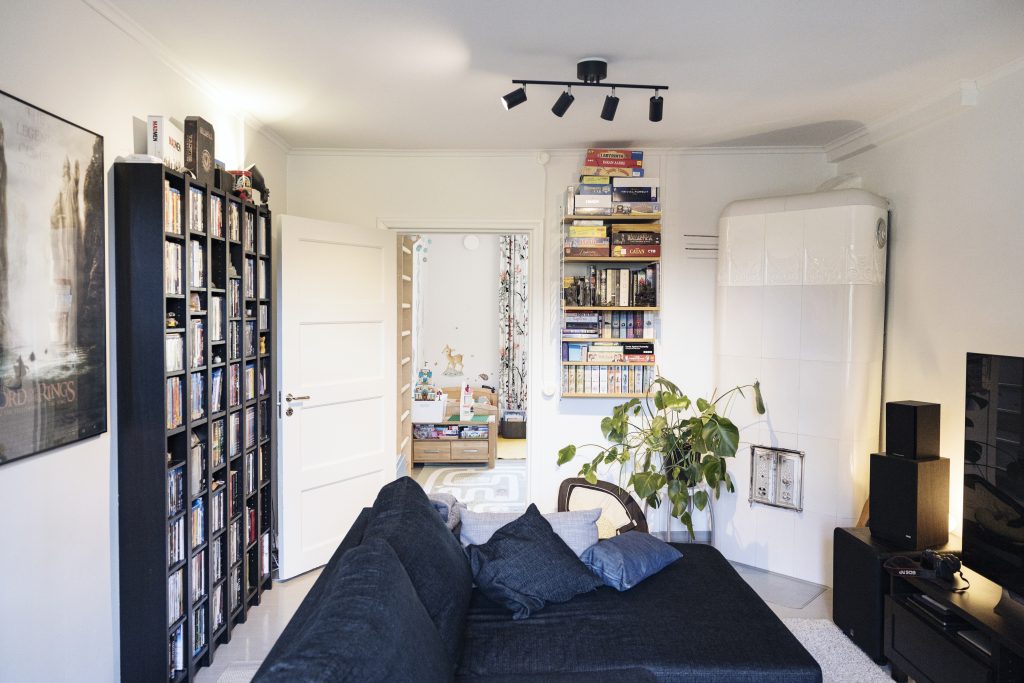
The layout challenges the family to be creative
The four-person family’s housing arrangements are made somewhat challenging by the layout of their home; there is plenty of area but only three rooms. Furthermore, the rooms do not have unbroken wall surfaces, as almost all walls have door or window openings in them. This makes interior decoration tricky.
“Our biggest challenge at the moment is that the kids need to have their own rooms. We don’t really know how we could achieve that, as some of the rooms are walk-through spaces that can’t really be divided,” Martta says.
The family did manage to come up with a creative solution for building a workspace for the father. The foyer now features ‘Ville’s room,’ located in a closet alcove by the front door and separated with a curtain.
“Probably the world’s smallest remote work station! This foyer is nice in a way, but it does take up a whole lot of space. In a modern apartment, it could serve as one bedroom,” Martta comments.
If they could have whatever they wanted, the family would like to have one more room, as well as another bathroom and a more spacious kitchen. However, the building itself and its milieu are more important. The family’s children are also willing to compromise.
“We like this more than having separate rooms for everyone in a multi-storey building,” the couple’s daughter Elli comments.
Jackpot for a family with children
The steep spiral staircase of the building leads to the second-floor end apartment, which is home to Piia, Jesse and their children Inka, 4, and Akseli, 1. The three rooms and kitchen of the apartment amount to a total of 73 square metres of area. The family ended up living in the church block by coincidence.
“I was pregnant at the time, and we were living in a studio apartment. We needed a bigger apartment and figured that we could apply for a place via Heka. We also included Puu-Käpylä in the search options. We were first offered an apartment in Puotila, which didn’t suit us, and then this one,” Piia explains.
This was roughly four and a half years ago. Piia and Jesse were not familiar with Puu-Käpylä, so they went to check out the atmosphere of the area before moving in. Their first impression was not exactly rosy.
“The area was under a full-blown renovation at the time, and the apartment wasn’t even ready. The yard was all messed up, complete with the sleet of November,” Jesse recollects.
The couple say that they gradually began to realise what kind of a jackpot they ultimately hit with their new apartment.
“After moving in, we began to understand how lucky we were,” Jesse says.
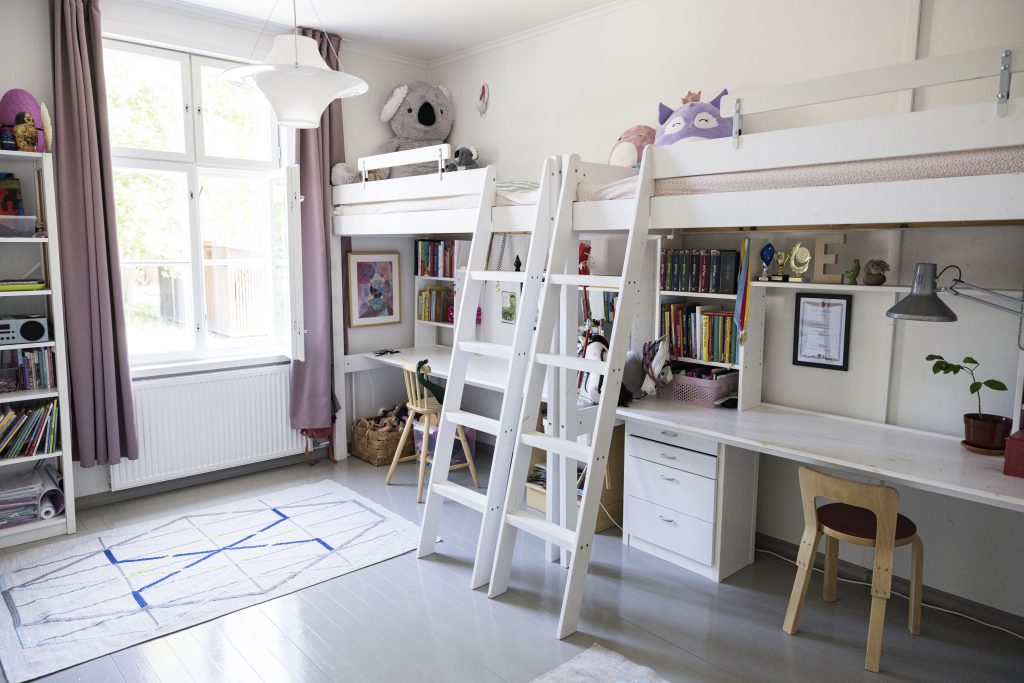
Modern interior decoration and homegrown strawberries
Piia says that the old age of the family’s home building does not pose any housing-related challenges. The family do have to make some small choices – for example, there is not enough room in the bathroom for both a changing table and a washing machine – but all in all, their everyday life is rolling along smoothly.
“This building hasn’t really struck me as being particularly old. Of course, the nature of the staircase is such that we have to keep the interior door closed because of the baby,” Piia says.
When it comes to interior decoration, the family do not feel any pressure brought about by the old architecture of the building.
“We don’t take the 20s’ style into account in our decoration choices in any way. We opt for a modern decoration style without any old furniture – and perhaps our style is also a little different,” Piia says.
The yard is an important extension of the home for Piia, Jesse and the children, and it also serves as a place to meet with neighbours. In the summer, the family grow strawberries on their patch and herbs in planting troughs.
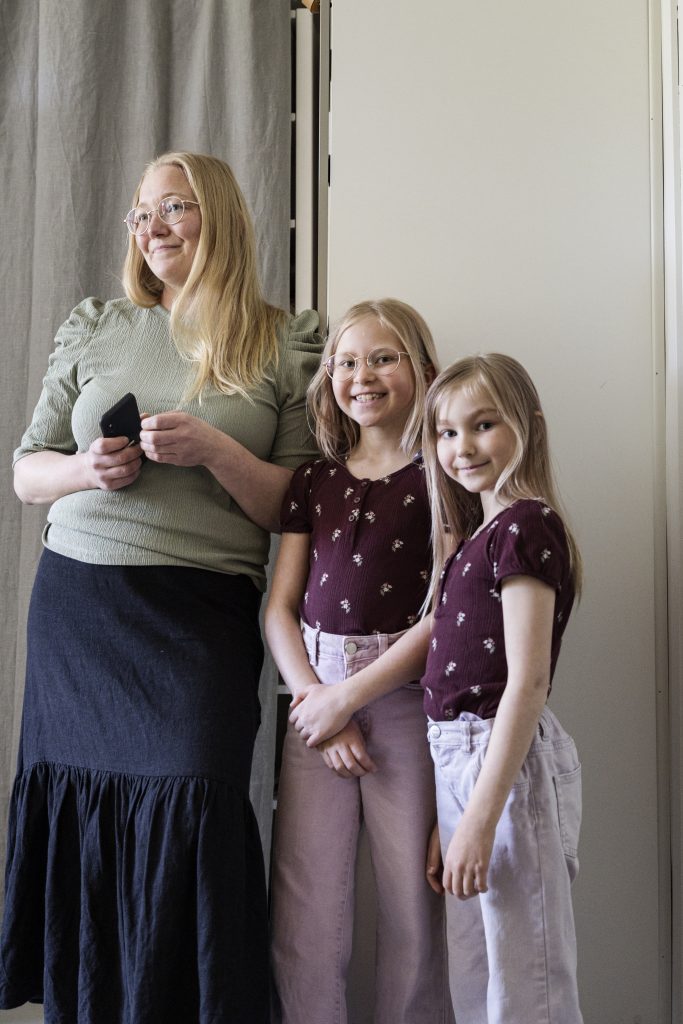
Enough space for a concert in the yard
The shared yard area has also been used to hold events to celebrate the centennial. A celebratory concert featuring Stadin Juhlaorkesteri was held the weekend after the housing fair, and in late August, the residents of the block had an open air banquet.
“We got immensely lucky. It had been raining the whole week, but on the morning of the celebration day, the weather became summery, warm and sunny,” rejoices Virpi Heinonen, chair of the building committee.
The day also involved opening a photo exhibition put together by residents of the block in the parish hall, and the evening culminated in an outdoor film screening, projected against the wall of Käpylä Church.
“The event exceeded our expectations,” Heinonen comments.
Neighbourliness put to the test
Eila Tervo has been living in the church block in her 41-m2 two-room apartment since 2018. The atmosphere in Eila’s home is harmonious and calm, and her interior decoration is in line with the old architecture of the building. The style of decades past can be seen in both the furniture and smaller details, such as the textiles and the tableware displayed on open shelves. The surfaces are painted with a light shade, giving the apartment plenty of light.
The apartment also has distinctive details of its own, such as a peculiar, inwardly arching kitchen ceiling, the purpose of which has even puzzled a visiting architect.
“This area is so green and unique. The building is peaceful and the neighbours are nice. We also have our private garden with globeflowers growing out there,” Eila says, pointing outside.
Eila finds no cons in the century-old building, nor does she feel that she has to compromise on anything.
“I can live a perfectly normal life here. The laundry room is right there, and we have a sauna. We have everything here.”
However, there is one aspect in the old wooden building that is not exactly up to snuff: the soundproofing.
“There was one occasion where we were having a get-together and playing music pretty late into the evening. A man from next door came over and angrily told us to cut it out. But the next day, he came over again to apologise,” Eila says and laughs.
The buildings are not ideal for people with reduced mobility. Even Eila’s first-floor apartment can only be accessed via stairs.
“This place isn’t exactly accessible, as there is no wheelchair access. When I age to that point, I may have to move. But hopefully that won’t be too soon,” Eila says.
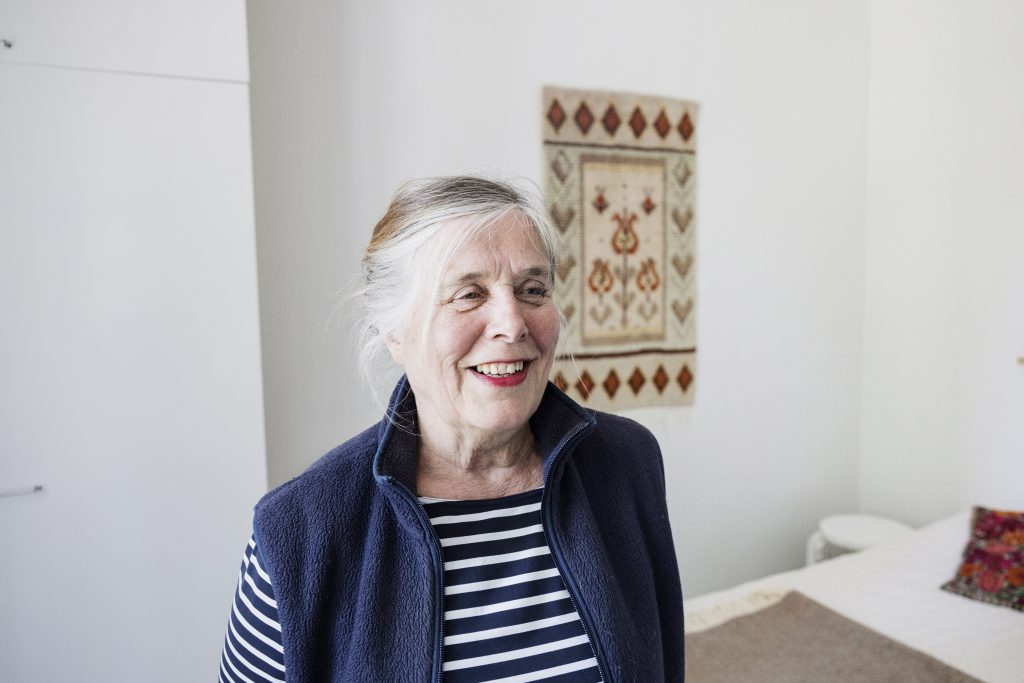
Housing from the 1920s to the present day – self-providing gardens are back
At first, the buildings of the church block were one-family homes. With the exception of one, they were later chopped up into smaller apartments. The buildings had a joint sauna and laundry room in a separate maintenance building – and still do.
Today, the maintenance building also features a shared club room for the residents. All of the apartments of the block had an indoor toilet from the start, which was quite advanced compared to the general level of comfort in the 1920s. However, there were no bathrooms until the 70s. Today, despite their historical setting, the apartments are fully modernised, complete with bathroom floor heating and a fixed broadband connection. Every home on the block features a masonry stove in the living room to provide pleasant heat when autumn arrives.
The block yard in the middle of the buildings of the church block originally featured a self-providing garden, the idea of which has now been revived. The gardens used to be an important part of the residents’ food supply. Today, the residents are allowed to plant almost anything but trees on their patches, from useful plants to flowers, and many enjoy gardening as a hobby.
The centennial celebrations will culminate in a joint Christmas party on 13 December. After a Christmas concert held in Käpylä Church, the residents of the church block will get together in the club room for a glass of mulled wine.